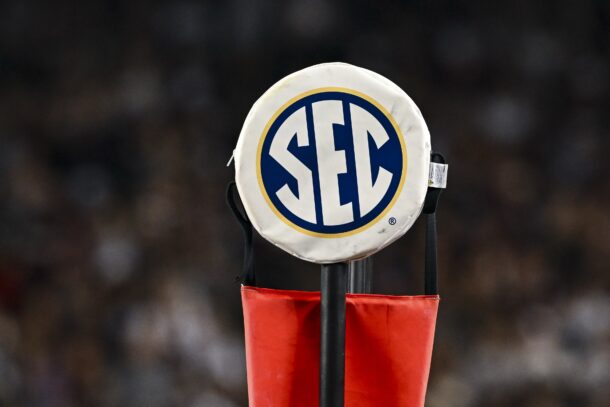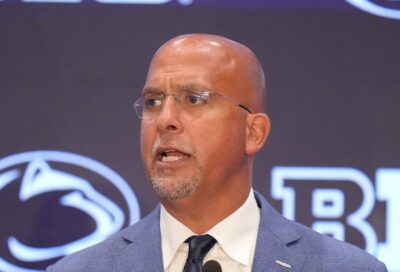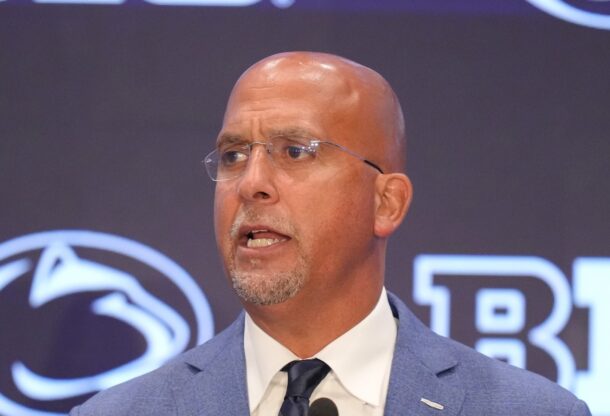TUSCALOOSA, Ala. — Call it taking a cue from his own offensive philosophy.
When Texas A&M recently lost to Mississippi State, 48-31, the Bulldogs did something that the Aggies try to do, attempt passes that are extremely difficult for defenders to stop.
“They made some plays on the perimeter in tight coverage, and some of the back-shoulder throws were perfect,” Texas A&M coach Kevin Sumlin said.
It’s probably exactly what he hopes his offense does against No. 7 Alabama on Saturday (3:30 p.m., ET, CBS).
Based on the past couple of matchups with Crimson Tide, Sumlin will almost certainly have his offense come out throwing in attempt to get Alabama (5-1, 2-1 SEC) on its heels. It’s something the UA defense had problems with last year, Mike Evans in particular, while giving up 464 passing yards in the 49-42 shootout.
But Johnny Manziel and Evans have moved on, along with some key players on the offensive line, where things haven’t quite clicked for the No. 21 Aggies (5-2, overall, 2-2 SEC). Consequently, the expectation is that quarterback Kenny Hill will attempt numerous short quick-release passes to try and nullify the Crimson Tide’s front seven.
When he does get time to go downfield, Texas A&M has five receivers with more than 300 yards receiving. Ricky Seals-Jones leads the Aggies with 37 catches, and Josh Reynolds averages 16.4 yards per reception and tops the Aggies with eight touchdowns. Freshman Speedy Noil has turned heads of late with 27 receptions for 360 yards and three touchdowns, but the player to watch is Malcome Kennedy.
The senior who made the game-winning touchdown catch at Bryant-Denny Stadium two years ago has missed the last two games with the same injury that initially sidelined Alabama’s DeAndrew White this season, a separated shoulder.
Despite sustaining it against Arkansas, Kennedy kept playing and made the game-winning catch in overtime for a 35-28 victory at neutral-site A&T Stadium in Arlington, Texas. Even with his absence he’s still second in team receptions (33) and receiving yards (378).
Kennedy is the kind of receiver can beat good coverage by quickly adjusting to a back-shoulder throw– which he’s shown over and over again.
“If a corner’s playing bump and run and he does a good job on the receiver, he keeps the receiver cut off,” Alabama coach Nick Saban explained about the strategy. “If you know what I mean by cut off, it means he keeps his shoulder in front of that guy’s shoulder because he doesn’t have any help outside so you can’t let the guy get on top of you, because then you’re beat and a good throw’s probably going to beat you.
“The defensive guy has to read the guy running the route and when his back shoulder turns back to the ball, you actually have to come back and play that like it’s a hook, like the guy’s running the hook route, because the ball’s getting thrown,” So you have to turn into the guy to play him. If you turn the other way, the guy will catch the ball and you won’t even be in position to tackle him. So it is very, very difficult. I think the decision you have to make is, everything has an issue, so you can play off and play soft and then they catch the ball in front of you all day and sometimes you don’t even tackle them and get them on the ground. Or you get up there and cover him and you deal with that pattern.
“We’ve kind of liked challenging guys and not letting them just run off the ball and run downfield. That comes from 42 years of going to 1-on-1 as a defensive back coach. When the guy plays off in 1-on-1 _ no pass rush, no nothing, just me and you, I’m covering you, you’re covering me however you want to do it. The guy catches the ball every time. When the guy gets up on the guy and presses him, he catches the ball half the time.
“So you’ve got to take the good with the bad.”
Last year, 10 different Texas A&M players made receptions against the Crimson Tide with Evans topping everyone with 10 catches for 279 yards. Among returning players, Kennedy had the best numbers, six for 57 yards.
“The back shoulder is definitely a tough route, because you’re so focused on the receiver getting behind you that you give way to the back shoulder,” junior cornerback Cyrus Jones said. “It’s a timing route, so you’re so busy trying to stay on top of the receiver that he falls behind you and the quarterback can just place the ball pretty much anywhere he wants and it’s up to you to try to find it and knock it out.”
Christopher Walsh has covered Alabama football since 2004 and is the author of 19 books. In his free time, he writes about college football.







